LG C1 vs LG G1: Which OLED TV is worth the splurge?
Two of the best OLEDs duke it out for a spot in your living room.
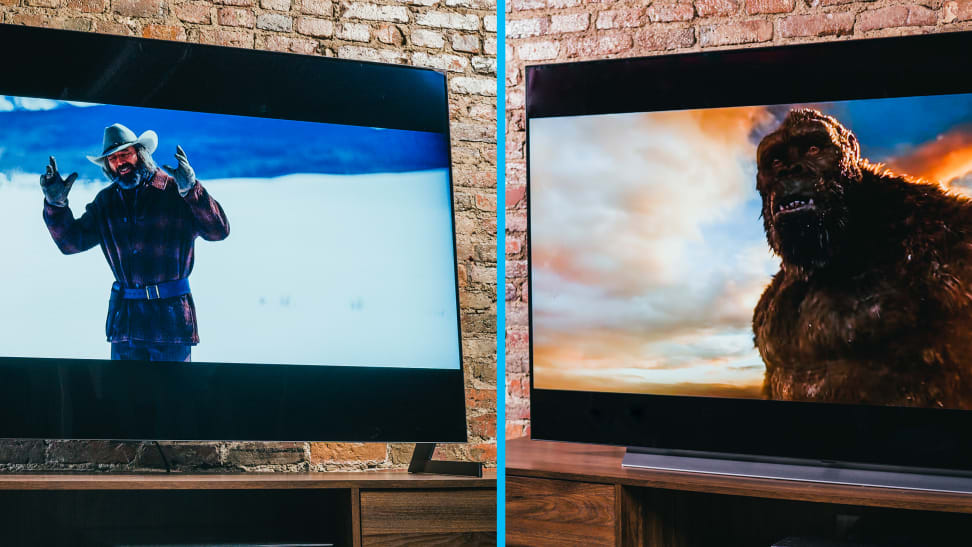 Credit:
Reviewed / Jackson Ruckar
Credit:
Reviewed / Jackson Ruckar
Products are chosen independently by our editors. Purchases made through our links may earn us a commission.
If you’re on the hunt for a top-shelf TV that will look incredible for years to come, an OLED TV is one of the best TVoptions available. Last year, two such TVs were among the best we tested: the LG C1 and the LG G1. Not only are these models still available to purchase, they’ve also never been cheaper.
Both offer world-class picture, posh design, and some of the best cutting-edge features currently available. But despite their similarly impressive resumes, there’s still a significant gap in price between the two models. In order to get to the bottom of which of these TVs is a better fit for your living room, we’re pitting them against one another in a head-to-head matchup across multiple categories. By the end of this exercise, you should have a very clear picture of which you should buy.
Price
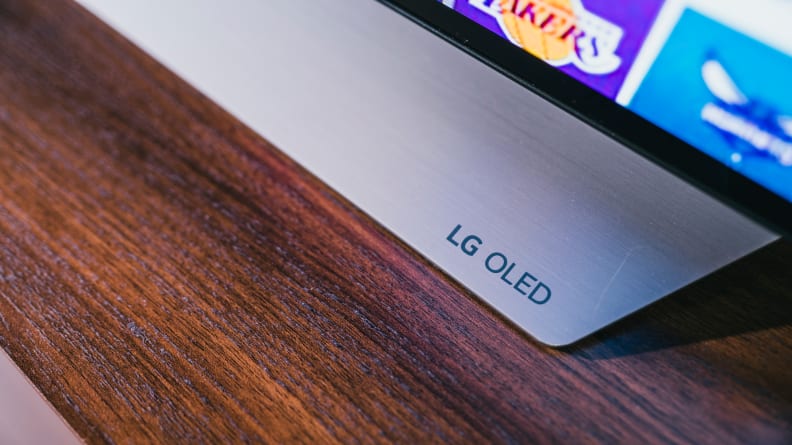
Both the C1 and the G1 are available in several sizes, but only the C1 is available in a 48-inch model.
At the time of publication, both the C1 and the G1 have seen deep discounts from major retailers. For the sake of context, I’m reporting both the original MSRP of each TV as well as their sale price at publication time.
The C1 and G1 are premium TVs through and through, from their display technology to their impressive collection of hardware and software enhancements. As such, you can expect to pay above-average prices for these TVs—regardless of whether they’re on sale or not.
First, let’s take a look at the C1 series:
LG C1:
- 48-inch (LG OLED48C1PUB), MSRP $1,499.99, (on sale for $1,169)
- 55-inch (LG OLED55C1PUB), MSRP $1,799.99, (on sale for $999.99)
- 65-inch (LG OLED65C1PUB), MSRP $2,499.99, (on sale for $1,596.99)
- 77-inch (LG OLED77C1PUB), MSRP $3,799.99
- 83-inch (LG OLED83C1PUB), MSRP $5,499.99, (on sale for $3,996.99) The 48-inch model is a great option for folks who want a top-shelf TV experience at a smaller-than-average size, while the 83-inch model is an ideal candidate for a premium home theater setup.
LG G1:
- 55-inch (LG OLED55G1PUA), MSRP $2,199.99 (on sale for $1,193.23)
- 65-inch (LG OLED65G1PUA), MSRP $2,999.99 (on sale for $1,773.56)
- 77-inch (LG OLED77G1PUA), MSRP $4,499.99 (on sale for $2,996.99)
The G1 is missing the 48- and 83-inch options on both ends of the lineup. That makes the C1 a more flexible option for shoppers in the market for a TV in a below- or above-average size.
Either way you slice it, the C1 is the cheaper option—even after factoring in price cuts.
Our pick: LG C1
Design
OLED TVs are known for their mind-bending, ultra-thin panels, which can be skinnier than smartphones. Both the LG C1 and G1 are indeed quite thin, but to varying degrees; while the C1 achieves that “thinner than an iPhone'' look (at least before the chassis bulges out slightly at its midsection), the G1 trades razor-level thinness for a uniform width from top to bottom. It’s still ridiculously thin as far as TV panels go, but it’s thicker than the C1 overall.
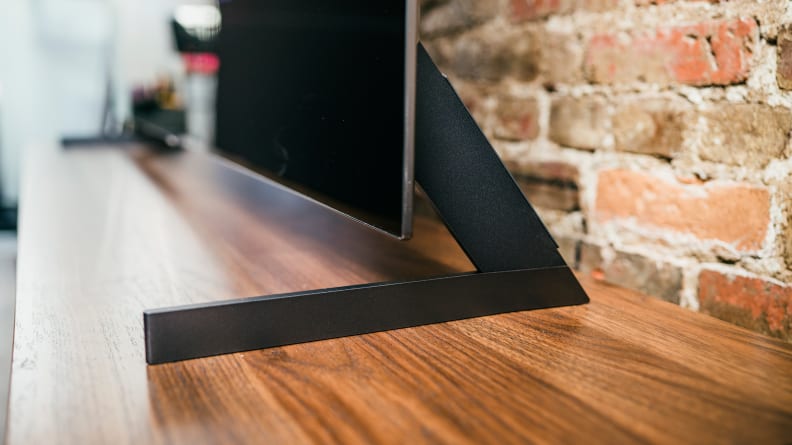
The LG G1 is designed for wall-mounting first and foremost, but you can opt to purchase a $100 stand system: a pair of angular feet that stretch to the corners of the display.
There’s good reason for this: As the “Gallery OLED” moniker implies, the G1 was designed for wall-mounting first and foremost, much like a portrait in an art gallery. Its uniform panel width allows it to sit flush on the wall, which is precisely why it looks better on the wall than the C1.
The G1 does offer a way to watch on a tabletop if you don’t intend on wall-mounting it, but the stand apparatus—a pair of narrow, angular feet—will run you about $100.

The LG C1's stand is a slanted, metallic slab that gives the appearance that the panel is being gently lifted above its surface.
As far as tabletop setups go, the C1’s out-of-the-box stand has a sleeker, more premium feel. It’s a metallic, downward-sloping slab that also acts as a reflector of sorts, aiming sound from the TV’s down-firing speakers out toward the viewer.
Unless you’re dead set on wall-mounting your new TV, the LG C1’s design offers more flexibility. There’s no denying the gallery-oriented G1 has the potential for artistic beauty, but we prefer the C1’s more holistic approach.
Our pick: LG C1
Features and smart platform
Before we dive into their differences, let’s take a look at the features shared by both of these premium smart TVs:
- Resolution: 4K (3,840 x 2,160)
- Display type: OLED
- HDR support: Dolby Vision, HDR10, HLG
- Dolby Atmos: Yes (native decoding)
- eARC support: Yes
- Native refresh rate: 120Hz
- HDMI: 4x HDMI 2.1 (40gbps, 4K at 120fps)
- Smart platform: webOS
- Color: DCI-P3 color space/10-bit chroma resolution
- Processor: a9 Gen 4 AI Processor 4K
- Variable Refresh Rate (VRR): Yes
- Auto Low Latency Mode (ALLM): Yes
- Other features: Filmmaker Mode, Game Optimizer, Free Sync, G-Sync, Google Assistant, Alexa, Apple AirPlay 2
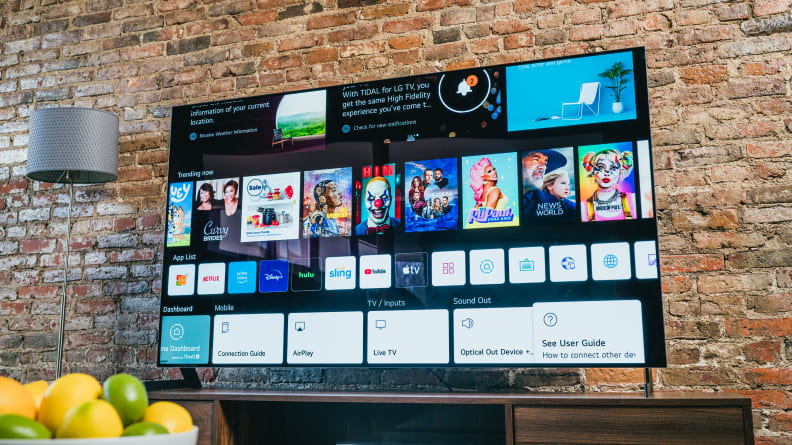
The G1 (seen here) runs the same version of LG's webOS smart platform as the C1. For all intents and purposes, the software experience is exactly the same.
As you can see, these two TVs have more similarities than differences in the features department. Both are 4K models that run the same version of LG’s smart platform, webOS, and they each use LG’s a9 Gen 4 processor. From a smart platform perspective, the experience is identical—right down to the speed with which the software operates.
Both TVs support Dolby Vision), which is considered by most to be the strictest HDR benchmark. In addition, both the C1 and the G1 can decode Dolby Atmos audio natively, and both TVs can pass it via eARC to Dolby Atmos soundbars—either in the uncompressed format (Dolby TrueHD) or the compressed format (Dolby Digital Plus). It's worth noting, however, that both models lack DTS support altogether. If you want a premium OLED TV that supports DTS passthrough, we recommend looking into the Sony A80J or the Sony A90J.
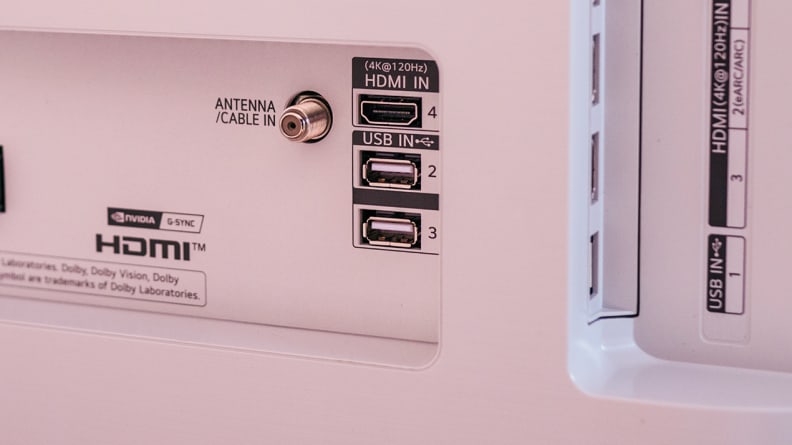
Both the C1 (seen here) and the G1 offer four HDMI ports that support 4K gaming at 120fps.
On the gaming side of things, the similarities run deeper. All four of the HDMI ports on both the C1 and G1 support 4K gaming at 120fps, and each TV supports both Variable Refresh Rate (VRR) and Auto Low Latency Mode (ALLM) for smoother, low-latency gaming.
So after all of that, are there any differences between these two TVs in this area? The answer is yes, and it has to do with the type of OLED displays each TV uses, which we'll talk about below. But as for features, be they smart or otherwise, there's really no notable difference between the two models.
Our pick: Draw
Performance

The LG G1 (seen here) gets ever-so-slightly brighter during HDR content, and also has richer, more accurate HDR color. That said, most folks wouldn't be able to tell it apart from the C1.
In 2021, the G1 was the first LG OLED TV to use a display type and picture processing technology called OLED evo. The new OLED display material—together with some behind-the-scenes processing work—allows OLED evo displays to achieve improved picture composition, more accurate primary colors, and a slightly brighter picture than that of OLED displays in the past.
Our lab tests indicate that LG’s OLED evo technology did, in fact, have an impact on picture quality—if only a little. The G1 gets slightly brighter during HDR content, with specular highlights climbing as high as 750 to 800 nits (compared to 700 to 750 nits on the C1).
Colors, too, are marginally better on the G1, though this isn’t quite as apparent to the naked eye. The G1 offers about 99.2% coverage of the extra-wide HDR color gamut (DCI-P3), while the C1 tops out at around 97%.
It’s unlikely that most folks would be able to see a difference unless these two TVs were displaying the same content side by side. While the G1 is technically the better performer, whether you opt for the C1 or the G1, you’re getting one of the best-performing TVs you can buy right now, thanks to LG’s sensational hardware and picture processing. Being OLED TVs, both the C1 and G1 offer perfect black levels, ultra-wide viewing angles, and rich, accurate color.
Our pick: LG G1
And the winner is…
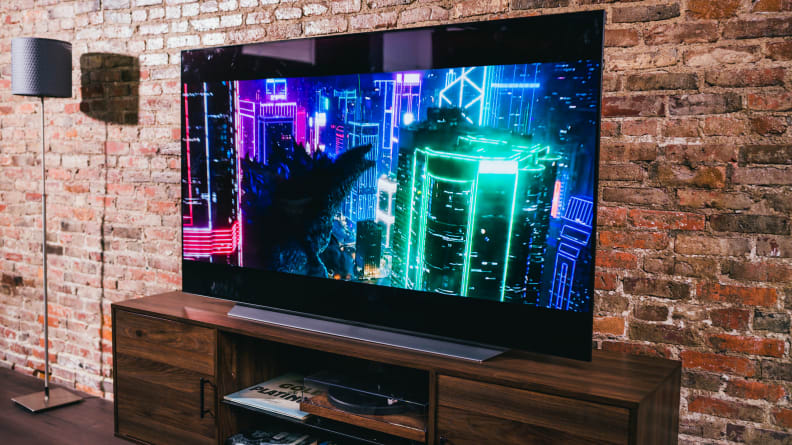
For most people, the LG C1 is a better choice than the LG G1. It's more affordable and the series size options offer more flexibility.
The LG C1 is a better option for most shoppers than the G1, given its price, the flexibility of its design, and the fact that the difference in performance between the two TVs does not reflect the difference in cost.
If you have your heart set on wall-mounting your next TV, there’s an argument to be made that the G1 will suit your needs a bit better, since its “Gallery” design is tailor-made to live on a wall. If that’s the case, you’ll also happen to be treated to an OLED TV that just barely beats the C1 in terms of performance—but not to a degree that you’re likely to notice.
While either of these top-shelf OLED displays are excellent, the C1 is the better pick for most buyers.


